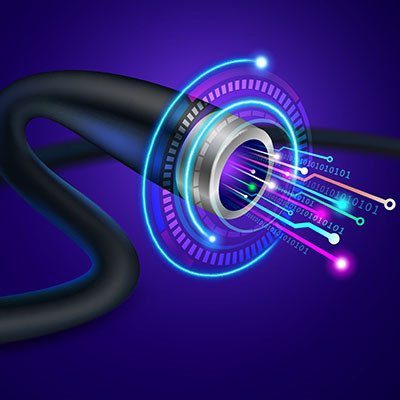Quercus IT Blog
The Evolution of Internet Speeds
With the Internet cementing itself as one of the best tools to get work done, it’s easy to forget just how sluggish it used to be back when it first became available for use. Internet speeds have undergone some dramatic shifts over the years, so let’s remember the good old days when it took ages to do just about anything with it.
Internet speeds are measured in megabits. 1,000 kilobits (technically 1,024 KB) is equivalent to 1 megabit and 1,000 megabits (technically 1,024 MB) is equivalent to 1 gigabit. Keep these numbers in mind as we discuss Internet speeds and their development over the years.
Dial Up
Can you believe that it’s only been about 25 years since the Internet became widely accessible in offices and homes? It was first introduced to the mass market through the use of dial up Internet, which used the phone line to connect. In the 1990s, people would have one telephone line for both the telephone and the computer. If an individual wanted to connect to the Internet, they would be charged for long distance—even if the “call” was to the next village or city over.
Around 2000, the average modem was 56 KB/s with an uninterrupted signal. A one-megabyte image would take about 20 seconds to download. This snail’s-pace speed by today’s standards was enough to make instant messaging and email possible, but other media-based activities would take days or weeks to transmit across the connection.
DSL
“High-speed” Internet became popular as we moved into the 2000s. DSL, or Digital Subscriber Line, utilized cable connections, allowing ISPs to transmit data at much faster speeds compared to dial up. The bandwidth of a cable was able to transfer much more data compared to the traditional telephone wire. In fact, DSL was so revolutionary that it still makes up the vast majority of connections you’ll find out there. A DSL connection is capable of delivering speeds of up to 100 MB/s, but realistically, it is more likely to be around the 5 MB-to-20 MB/s range.
This large increase in speed allows for much more in terms of the work you can do. Cloud-hosted email, for example, can be utilized with these speeds, along with music streaming and website browsing. Around 2010, when DSL became widely available, there was a huge burst of application development utilizing the speeds—a new trend which is still happening to this day. Even video streaming, in the grand scheme of things, is quite new, but it wouldn’t have been possible without the inception of DSL connections.
Fiber Optic
Of course, there is also the fiber optic cable option, which is what many of today’s fastest Internet speeds utilize. Fiber optic uses light to transmit data, and is therefore much faster than DSL connections. DSL cable systems lose speed and performance the farther the signal must go, but with fiber optic, Internet speeds and bandwidth are exponentially better. Fiber optic is capable of speeds of up to tens of gigabits per second. Absolutely wild stuff.
Mobile computing has only further changed this fact, as people rely more on Wi-Fi signals than ever before. Otherwise people would be exceeding their data caps more frequently. Fiber has given people access to much faster connections—connections that systems and businesses rely on to function. It’s made working from home easier and more efficient, online schooling and telehealth more accessible, real-time data collection much simpler, and communication and collaboration more reliable.
If you’re curious about your current Internet speeds (and you should be), you can use free Internet speed test applications, like the one found at https://www.speedtest.net/. This should give you a decent enough look at your Internet speed, and if you find it’s not up to snuff, you can call us at (780) 409-8180. We can’t increase the speed of your connection—that responsibility falls to your Internet service provider—but we can optimize your network and the hardware around it to make sure you’re not losing speed from things within your control, like blocked modems, network bottlenecks, and the like.



